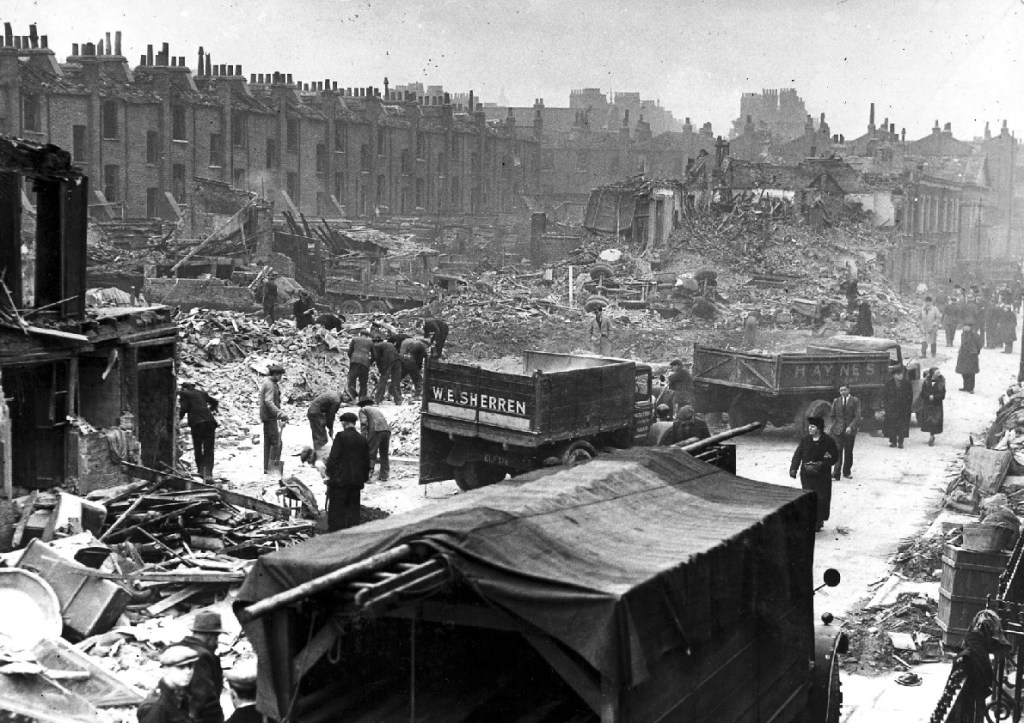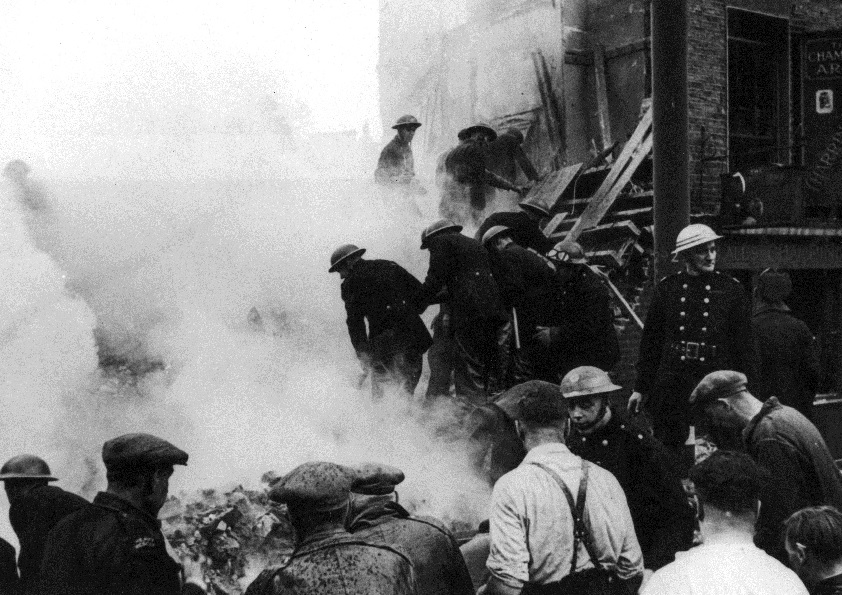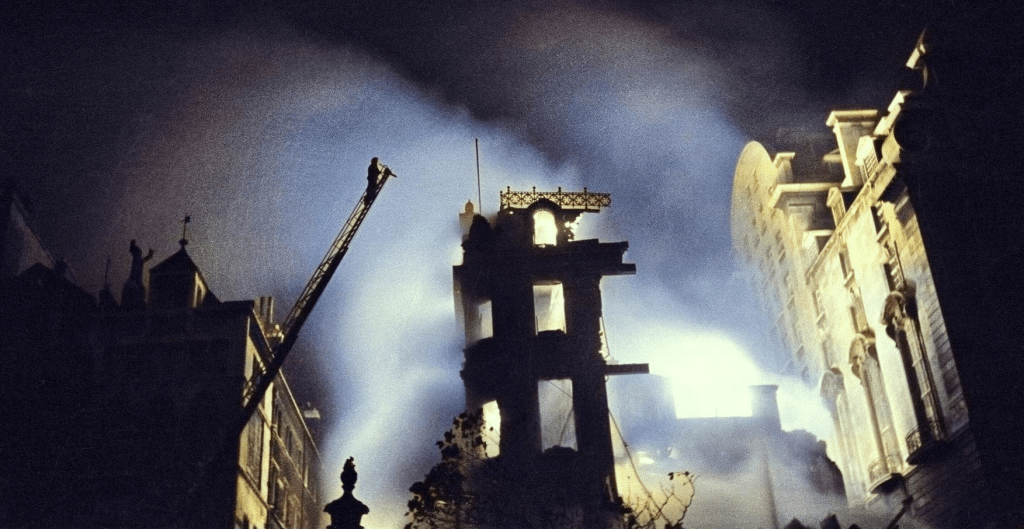As part of the exhibition We’ll Meet Again: Islington on the Home Front in Photographs (1939-45), we delve deeper into the significant bomb damage suffered in Islington and Finsbury.
Britain began preparing for the devastation of war on the home front well before the Second World War began. With the government conscious of war potentially being waged against civilians, Islington’s residents began receiving air-raid shelters from February 1939, more than half a year before the war and attacks on home soil began.
As part of war preparations, volunteers were trained in civil defence duties to warn or respond to attacks. Many civilians became Air Raid Wardens, Home Guard members, firefighters, first-aiders and ambulance drivers, who would provide invaluable assistance to their community once war began.
On 7 September 1940 the German Luftwaffe initiated their Blitz on Britain. The term Blitz was taken from the German word Blitzkreig, meaning ‘lightening war;’ a clear indication of Germany’s intent from day one. On the first day of bombardment, 430 were killed and 1,600 injured in London. Thousands of deaths and endless destruction would follow the continuous bombing over the ensuing months.
London was bombed significantly at night, but daytime attacks were frequent too. In October 1940, Islington’s rescue service attended 131 incidents, the most in one night being 32. Records show that 206 people were recovered alive, with 83 deceased. Rescue operations to retrieve casualties could take several hours or even days to complete and were sometimes performed whilst raids were still in progress.
Islington’s Bomb Damage Respondees

Auxiliary Fire Service drill, Islington, 1939/40
This photograph shows members of the Auxiliary Fire Service dealing with a blazing ‘incendiary bomb crater’ during a demonstration at an Islington square. Drills such as this were common during the early days of the war to ensure that crews were prepared for the ‘real thing’.
The Auxiliary Fire Service (AFS) was formed in 1938, as part of the Civil Defence Service. Its role was to supplement the work of fire brigades at local level. The AFS and the local brigades were superseded three years later by the National Fire Service.

Hugh Myddelton School, Finsbury, after 25 October 1940
This photograph shows firefighters cleaning debris following a raid at their fire sub-station located at Hugh Myddelton School in Corporation Row, Clerkenwell. The building took a direct hit from a high explosive bomb.
Beatrice Arnold, 28, of Holloway and Swedish-born, Constable (Police Reserve) Karl Friman, 37, resident of Bloomsbury, were killed in the incident.

Pembroke Street, Islington, after 17 April 1941
On the night of 16/17 April 1941, Pembroke Street, Islington,was badly hit by a parachute mine. Lorries were brought in to clear the vast amount of debris from the bomb damage.
Although the majority of casualties from this were accounted for in two days, it was not until 29 April that the Rescue Service was able to finally leave the incident. In all, 23 residents from numbers 39-52 Pembroke Street died in the attack.

Finsbury Square, Finsbury, 15 October 1941
This atmospheric photograph shows firefighters bravely tackling a fire at Finsbury Square. The attack was part of the Luftwaffe’s ‘Tip and Run’ raids that followed the Blitz. These ad-hoc raids occurred between May 1941 and December 1943, and were carried out by fast-moving German fighter-bombers.
The buildings ablaze here were located in the north-eastern part of Finsbury Square, near to the junctions with Christopher Street and Wilson Street. There were no reported casualties but the buildings were considered beyond repair and later demolished.

Garnault Place, Finsbury, 5 July 1944
Firefighters in action in burning debris in Garnault Place, off Rosebery Avenue, following a V-1 rocket attack. To the right of the photograph is the Champion Arms public house at 8 Garnault Place. Eight people died in this incident.
The first V-1 (Vergeltungwaffe or ‘Vengeance weapon’) rocket to hit London landed on 13 June 1944 at Bow. The first in Islington occurred on 18 June in Spencer Street and Wynyatt Street, Finsbury, killing 13 people and injuring 83 more.
Over the coming weeks, we will be sharing more images from the exhibition We’ll Meet Again: Islington on the Home Front in Photographs (1939-45). Next week we’ll be looking at life on the Home Front in Islington and Finsbury during the Second World War.


Leave a comment